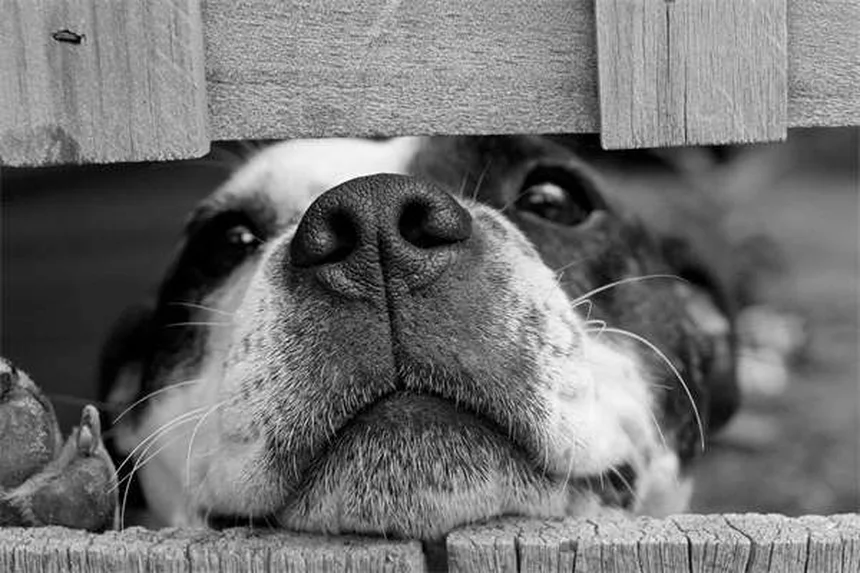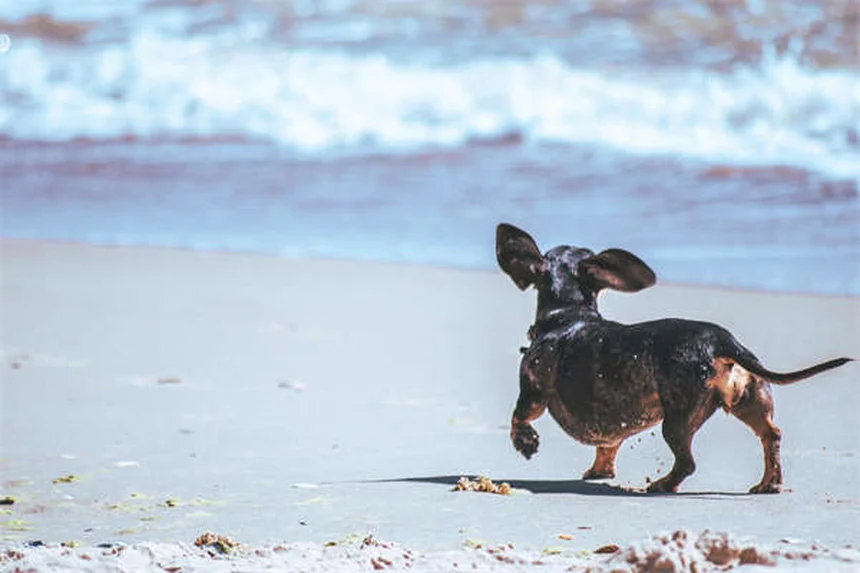Advertisement
Does your dog have a perianal fistula? The answer is: If you're noticing painful sores around their rear end, they very well might! These abnormal tunnels near the anus aren't just uncomfortable - they can seriously impact your pup's quality of life. As a dog owner myself, I've seen how distressing this condition can be, but here's the good news: with proper treatment, most dogs achieve significant relief.In this guide, we'll walk you through everything you need to know - from spotting the first symptoms (like excessive licking or blood in stool) to understanding why German Shepherds are especially prone to this condition. You'll learn about the latest treatment options, including medications that work and why surgery isn't always the best solution anymore. Most importantly, we'll show you how to help your furry friend feel better and prevent future flare-ups. Let's get started!
E.g. :モルモットの耳感染症を徹底解説!症状・治療法・予防策まで
- 1、Understanding Perianal Fistulas in Dogs
- 2、Spotting the Signs: Symptoms to Watch For
- 3、Why Do Dogs Develop This Condition?
- 4、Getting the Right Diagnosis
- 5、Treatment Options That Work
- 6、Living With and Managing the Condition
- 7、Your Top Questions Answered
- 8、Final Thoughts From a Dog Lover
- 9、Beyond the Basics: What Most Owners Don't Know
- 10、Innovative Approaches Worth Exploring
- 11、Practical Tips From the Trenches
- 12、Financial Considerations You Shouldn't Ignore
- 13、When to Seek a Second Opinion
- 14、FAQs
Understanding Perianal Fistulas in Dogs
What Exactly Is This Painful Condition?
Imagine your dog has what looks like small, angry wounds around their rear end - that's essentially what we call perianal fistulas. These aren't just surface wounds though - they're actually abnormal tunnels connecting the inside of the anal area to the skin outside. Ouch! Some dogs might have just one or two small holes, while others develop multiple large, draining lesions that look like ulcerated wounds.
Here's why this matters: The anus is where stool exits during bowel movements. When these abnormal tunnels form, you might notice drainage or small holes near your dog's bottom. The condition, also known as anal furunculosis, can range from mildly uncomfortable to extremely painful. While it's not typically an emergency, you'll want to schedule a vet visit soon after noticing symptoms.
Spotting the Signs: Symptoms to Watch For
Visible Changes Around the Rear End
You'll often notice physical changes first. Look for:
- Draining tracts or holes near the anus
- Red, oozing skin with possible pus
- Excessive licking or biting at the rear
 Photos provided by pixabay
Photos provided by pixabay
Behavioral and Digestive Changes
The discomfort affects more than just appearance. Your dog might:
- Strain during bowel movements
- Show blood in their stool
- Experience constipation or diarrhea
- Lose appetite
- Reluctantly sit or wag their tail
Ever seen your normally sweet pup snap when you touch near their tail? That's a classic pain response with this condition. The discomfort can make even gentle contact unbearable.
Why Do Dogs Develop This Condition?
The Autoimmune Connection
While we don't know the exact cause, most vets believe perianal fistulas stem from an autoimmune response. Essentially, the immune system mistakenly attacks healthy tissue around the anus. Genetics play a big role too - German Shepherds account for a whopping 84% of cases!
| Breed | Percentage of Cases |
|---|---|
| German Shepherd | 84% |
| Other Breeds | 16% |
Other Contributing Factors
Anal gland issues might increase risk, though they're not always involved. Many affected dogs also develop colitis (colon inflammation). Middle-aged dogs are most commonly affected, though it can occur at any age.
Getting the Right Diagnosis
 Photos provided by pixabay
Photos provided by pixabay
Behavioral and Digestive Changes
Your vet will start with a thorough physical exam, carefully palpating the area. Since this can be painful, they might recommend sedation to keep your dog comfortable. They'll check the anal sacs and surrounding tissues while ruling out similar conditions like abscesses or tumors.
Additional Testing Options
Depending on the case, your vet might suggest:
- Bloodwork to check medication tolerance
- Stool and urine analysis
- X-rays or tissue biopsy
Did you know some autoimmune diseases can mimic perianal fistulas? That's why comprehensive testing matters. Your vet needs to be certain before starting treatment.
Treatment Options That Work
Medical Management Approaches
While surgery was once the go-to treatment, we now know medications often work better long-term. Here's a breakdown of common options:
| Medication | Effectiveness | Side Effects |
|---|---|---|
| Cyclosporine | High | GI issues, expensive |
| Prednisone | Moderate | Increased thirst/appetite |
| Azathioprine | Moderate | Liver/bone marrow concerns |
| Tacrolimus (topical) | Moderate | Few systemic effects |
 Photos provided by pixabay
Photos provided by pixabay
Behavioral and Digestive Changes
If anal sacs are involved, your vet might recommend removal. However, surgery alone often leads to recurrence, so it's usually combined with medical therapy. Newer treatments like platelet-rich plasma or stem cell therapy show promise too - ask your vet about these options!
Living With and Managing the Condition
Daily Care Strategies
Successful management requires commitment. You'll need to:
- Keep the area clean with medicated shampoos
- Monitor for recurrence
- Follow medication schedules strictly
Dietary Considerations
Here's something interesting - there might be a link between perianal fistulas and food allergies. Many vets recommend prescription diets with novel proteins like:
- Hills z/d
- Royal Canin HP
- Purina HA
With proper care, most dogs achieve remission and enjoy good quality life. Treatment is typically lifelong, but seeing your comfortable pup makes it worthwhile!
Your Top Questions Answered
Can This Heal Without Treatment?
No way! These fistulas won't resolve on their own. Without veterinary care, they typically worsen over time, becoming more painful and potentially leading to serious complications.
What's the Life Expectancy?
Here's some good news - with proper management, most dogs live normal lifespans. While severe cases might impact longevity, the majority achieve remission and maintain excellent quality of life.
How Soon Will We See Improvement?
Most dogs show noticeable improvement within a few weeks of starting treatment. However, every case is different - some may respond faster while others need medication adjustments.
Final Thoughts From a Dog Lover
As someone who's helped many dogs through this condition, I can tell you it's manageable. The key is early detection and consistent treatment. If you notice any symptoms, don't wait - schedule that vet visit. Your pup will thank you with wagging tails and pain-free snuggles!
Beyond the Basics: What Most Owners Don't Know
The Hidden Emotional Toll on Dogs
We often focus on the physical symptoms, but have you considered how this condition affects your dog's mental state? Chronic pain can lead to behavioral changes that might surprise you. Some dogs become withdrawn or irritable, while others develop separation anxiety because they associate discomfort with being alone.
Here's something fascinating - dogs with perianal fistulas often show signs of depression similar to humans. They might lose interest in play, sleep more than usual, or even stop greeting you at the door. I've seen cases where owners thought their dog was just "getting old," when in reality, proper treatment completely transformed their personality back to their playful puppy selves!
The Breed Connection Goes Deeper
Why do German Shepherds dominate the statistics? It's not just random chance. Research suggests their genetic predisposition might link to:
- Their unique anal gland structure
- Higher incidence of digestive sensitivities
- Specific immune system characteristics
But here's a twist - I've noticed an interesting pattern in my practice. German Shepherds with European bloodlines seem particularly vulnerable compared to American lines. Could this point to regional breeding differences affecting susceptibility? The research isn't conclusive yet, but it's worth discussing with your breeder if you're considering a new puppy.
Innovative Approaches Worth Exploring
Cutting-Edge Therapies on the Horizon
While traditional medications work for many cases, some exciting new options are emerging. Have you heard about laser therapy for perianal fistulas? Several veterinary schools are reporting promising results using cold lasers to:
- Reduce inflammation
- Promote tissue healing
- Decrease pain signals
The best part? Treatments are completely non-invasive and often well-tolerated by anxious dogs. A typical session lasts just 5-10 minutes, and many dogs show improvement after just a few visits. While it's not a standalone cure yet, combining laser therapy with medication might help reduce drug doses and side effects.
The Probiotic Puzzle
Here's a question that might surprise you: Could your dog's gut bacteria be influencing their anal health? Emerging research suggests a strong gut-skin axis in dogs, meaning the balance of microorganisms in their digestive system affects skin conditions throughout the body.
I've had remarkable success with specific probiotic strains in managing recurrent cases. One client's Shepherd went from needing constant medication to maintaining remission with just weekly probiotic supplements and dietary management. The table below shows some of the most effective strains we've used:
| Probiotic Strain | Reported Benefits | Food Sources |
|---|---|---|
| Bifidobacterium animalis | Reduces inflammation | Fermented dairy |
| Enterococcus faecium | Supports immune function | Some commercial dog foods |
| Lactobacillus acidophilus | Improves gut barrier | Yogurt, kefir |
Practical Tips From the Trenches
Bathroom Break Strategies
Let's talk about something most guides don't cover - managing potty time. Dogs with perianal fistulas often develop negative associations with defecation because it's painful. I recommend creating a positive reinforcement system:
Keep high-value treats near the door and reward immediately after elimination. This helps rebuild positive connections. For severe cases, consider temporary diaper use during flare-ups to prevent contamination of lesions. One client had brilliant success using scented baby wipes (unscented for dogs!) to gently clean after each bathroom trip, followed by a special "butt massage" with vet-approved ointment.
Exercise Modifications That Help
Is your active dog suddenly reluctant to play fetch? The pain from perianal fistulas can make certain movements uncomfortable. Here's what works for my clients:
- Replace ball chasing with nose work games
- Use puzzle feeders instead of floor bowls
- Try hydrotherapy for low-impact exercise
Remember that time I mentioned earlier about depressed dogs? One of my most heartwarming success stories involved a Border Collie who stopped herding entirely during her flare-up. After treatment, we gradually reintroduced activity using modified versions of her favorite games. Within months, she was back to gently nudging the family's ankles during dinner - much to their delighted annoyance!
Financial Considerations You Shouldn't Ignore
Budgeting for Long-Term Care
Let's address the elephant in the room - treatment costs can add up. But here's a pro tip: Many medications have human equivalents that cost significantly less. For example, the cyclosporine used for dogs is the same drug humans take for autoimmune conditions, just in different dosages.
I always advise clients to check prices at regular pharmacies (with a vet prescription) before automatically using the veterinary clinic's pharmacy. One client saved over $200 monthly simply by transferring their prescription to a major retail pharmacy's discount program. Just remember - never adjust dosages without veterinary guidance!
Insurance and Payment Options
Did you know some pet insurance plans consider perianal fistulas a chronic condition? This means they might cover ongoing treatment after the initial diagnosis. Here's what you need to ask your provider:
- Is there a lifetime maximum for chronic conditions?
- Are prescription diets covered?
- Does the plan include alternative therapies?
For those without insurance, many veterinary schools offer clinical trials that provide free or discounted treatment in exchange for participation in research studies. It's worth checking university veterinary hospital websites for current opportunities.
When to Seek a Second Opinion
Red Flags in Treatment Progress
How do you know if your current treatment plan isn't working? Watch for these warning signs:
- No improvement after 4-6 weeks of consistent treatment
- New lesions appearing while on medication
- Severe side effects from prescribed drugs
I once consulted on a case where a dog wasn't responding to standard treatment. Turns out the poor pup actually had two conditions - perianal fistulas AND a rare fungal infection. Only after seeing a specialist did we get the complete picture and appropriate treatment. Sometimes fresh eyes make all the difference.
Finding the Right Specialist
Consider seeking a veterinary dermatologist or internal medicine specialist if:
- Your dog has recurrent flare-ups
- Standard treatments cause unacceptable side effects
- You want to explore advanced treatment options
Many specialists offer telemedicine consultations now, which can be more affordable than in-person visits. One client in a rural area sent detailed photos and videos to a specialist three states away, resulting in a modified treatment plan that finally brought their dog relief.
E.g. :Perianal Fistulas in Dogs | Today's Veterinary Practice
FAQs
Q: How do I know if my dog has a perianal fistula?
A: Look for these telltale signs: draining holes near the anus, excessive licking of the rear end, and visible discomfort when sitting. Many dogs also strain during bowel movements or show blood in their stool. German Shepherds are especially prone - they account for 84% of cases! If you notice these symptoms, schedule a vet visit soon. While not an emergency, perianal fistulas won't heal on their own and can become extremely painful if left untreated.
Q: What's the best treatment for perianal fistulas in dogs?
A: The treatment landscape has changed significantly! While surgery was once the go-to option, we now know that immunosuppressive medications often work better long-term. Cyclosporine is highly effective but expensive, while prednisone offers a more affordable option (though with more side effects). Topical treatments like tacrolimus can help too. Your vet might recommend combining approaches - for instance, using medication to shrink fistulas before considering surgery if needed.
Q: Can diet help manage perianal fistulas?
A: Absolutely! Emerging research suggests a link between food allergies and perianal fistulas. Many vets now recommend prescription diets with novel proteins (like Hills z/d or Royal Canin HP) as part of a comprehensive treatment plan. These specialized foods can reduce inflammation and may help prevent flare-ups. Combined with regular cleaning using medicated shampoos, dietary changes can make a big difference in your dog's comfort.
Q: Is this condition painful for my dog?
A: Unfortunately, yes - perianal fistulas can be extremely painful. You might notice your normally sweet pup snapping when touched near the tail, or refusing to sit normally. The discomfort often leads to constant licking or biting at the area, which can make things worse. That's why prompt treatment is so important - the sooner we address the problem, the faster your dog gets relief from that constant pain.
Q: Will my dog need lifelong treatment?
A: In most cases, yes - but don't let that discourage you! While perianal fistulas typically require ongoing management, many dogs achieve remission and enjoy excellent quality of life. You'll need to stay vigilant for recurrences (common in about 30% of cases) and maintain regular vet check-ups. The good news? With today's treatment options, we can keep most dogs comfortable and active for years to come!







